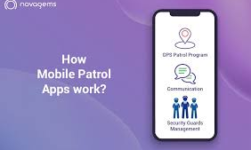
In a time overwhelmed by digital experiences, web apps have become essential to our regular routines. They connect us to information, services, and entertainment. However, not all web apps are made equivalent. Enter progressive Web Applications (PWAs), an extraordinary idea that reclassifies how we cooperate with the web.
These PWAs offer an inclusive, responsive, and engaging experience that bridges the gap between native websites and native mobile apps. They are more than just the future – they are the present, representing a compelling solution for developers and users alike.
This guide explores the world of Progressive Web App development and its significance in creating web apps that work seamlessly for everyone, regardless of their devices or abilities
Start a Web Server
Before getting deep into the interesting world of Progressive Web Applications (PWAs), the excursion starts with setting up a web server.. This foundational step serves as the launching pad for your PWA development. You can deploy your PWA on various platforms, making it accessible to a broader audience.
You might decide to have your PWA on your server or settle on cloud-based arrangements. By facilitating your PWA on a web server, you guarantee that it’s accessible to clients day in and day out, no matter what their area or gadget
Create Your App Page
Once you’ve established a web server, the next pivotal step is creating your app page. This page will act as the section guide for users toward accessing your Dynamic Web Application (PWA). It’s the initial feeling, and it should be outwardly engaging, easy to use, and locking in.
Collaborating with a custom website development company can be highly beneficial during this stage.
Their mastery in website design and user experience can assist you with making a page that looks perfect as well as offers a smooth and natural route insight. The layout, content, and functionality of this page should reflect the essence of your PWA and draw users in.
Styling Your Page
Styling your app page is not just about aesthetics; it’s about creating a user interface that captivates and guides users effectively. As you embark on the journey of Progressive Web App (PWA) development, collaborating with a progressive web app development company can prove invaluable at this stage.
Your selection of varieties, text styles, and visual components ought to line up with your image personality and the client experience you need to convey.. A well-structured, visually pleasing page enhances user engagement and makes your PWA more appealing.
Use JavaScript to Show Your Data (Expanded):
JavaScript plays a pivotal role in bringing your Progressive Web App (PWA) to life. It enables dynamic content presentation, interactivity, and real-time updates, enhancing the overall user experience. When working with a progressive web app development company, their expertise in JavaScript can be a valuable asset.
JavaScript allows you to fetch and display data from various sources, creating a dynamic and engaging user interface. Whether it’s loading news articles, user profiles, or interactive maps, JavaScript empowers your PWA to deliver content and functionality that rival native mobile apps.
Create Web App Manifest
The Web App Manifest is the blueprint of your Progressive Web App (PWA). It defines essential information about your app, such as its name, icons, theme colors, and how it should behave when launched. Collaborating with a PWA development company with expertise in manifest creation can streamline this process.
The manifest file not only influences the app’s appearance but also its functionality. It allows users to add your PWA to their device’s home screen, providing an app-like experience. Setting the right display mode, orientation, and theme colors can significantly impact user engagement and brand consistency.
Add the Manifest to Your HTML File
After creating the Web App Manifest, the next step is integrating it into your HTML file. This connection is pivotal in enabling your Progressive Web App (PWA) to behave like a native mobile app.
Collaborating with a PWA development services provider can help ensure that this integration is seamless and error-free. When the manifest is correctly linked to your HTML, your PWA gains the ability to be added to a user’s home screen, making it easily accessible and providing a consistent, app-like experience.
Create the Service Worker
The Service Worker is the engine that controls Progressive Web Apps (PWAs). It acts as a background script, enabling key PWA features like offline access, background sync, and push notifications. The process of creating a Service Worker is pivotal to your PWA’s success.
Working with an experienced PWA developer is crucial during this phase. They can help you write and implement the Service Worker code efficiently, ensuring that it performs its tasks without impacting the user experience. The Service Worker is responsible for caching resources, intercepting network requests, and delivering a seamless and responsive user experience, even when offline.
Register the Service Worker
Registering the Service Worker is the next essential step in making your Progressive Web App (PWA) fully operational. The Service Worker, once created, needs to be linked to your web app to start working in the background.
This process is often handled by a PWA developer or development team with expertise in Service Worker implementation. When correctly registered, the Service Worker can start caching resources, enabling offline access, and handling push notifications, all of which contribute to a smooth and reliable user experience.
Thorough testing and debugging are essential to ensure that the Service Worker functions as intended and that any issues are promptly addressed before deployment.
Analyze App Performance
As your Progressive Web App (PWA) takes shape, it’s crucial to monitor its performance continuously. Performance optimization is key to providing a seamless user experience and retaining user engagement.
Hire a PWA developer who can ensure that performance analysis is rigorous and effective. They can utilize tools and techniques to identify bottlenecks, slow-loading resources, and other factors that may impact the PWA’s speed and responsiveness.
Routinely checking on execution measurements, for example, page load times, asset utilization, and client communications, permits you to arrive at informed conclusions about streamlining, and development performance analysis is an ongoing process that ensures your PWA consistently delivers exceptional user experiences.
Audit Your PWA With Lighthouse
Conducting a thorough audit of your Progressive Web App (PWA) with tools like Lighthouse is essential to ensure it meets best practices and industry standards. This step is vital for identifying potential issues and areas for improvement.
A progressive web app development company or PWA developer can utilize Lighthouse to assess various aspects of your PWA, including performance, accessibility, best practices, and SEO. The audit results provide actionable insights into where your PWA excels and where it may need adjustments.
Conclusion:
Progressive Web App (PWA) development is an extraordinary excursion, reshaping how we collaborate with web applications through the meticulous steps of setting up a web server, designing captivating app pages, harnessing the power of JavaScript, crafting a comprehensive Web App Manifest, and implementing Service Workers, your PWA becomes a user-centric, accessible, and high-performing digital marvel.
Collaboration with custom website development companies, progressive web app development experts, and PWA developers is essential for a seamless process. Continual performance analysis and audits with tools like Lighthouse ensure your PWA stays at its best, offering users an unmatched web experience.


